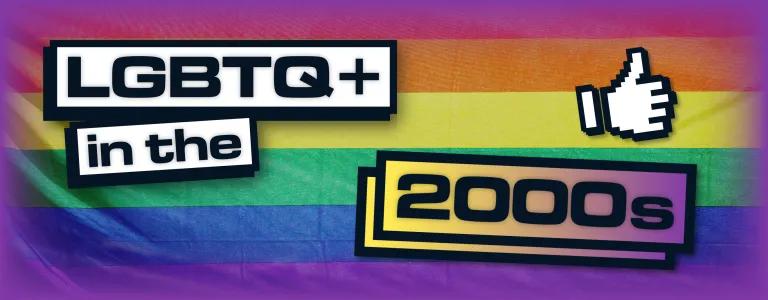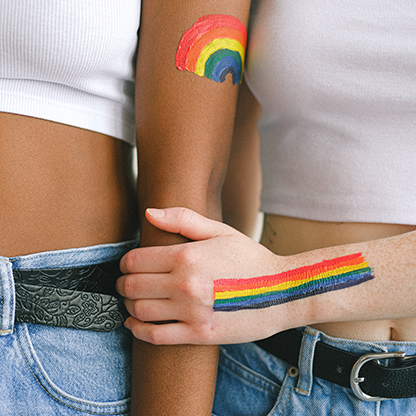
LGBTQ+ History By The Decades (2000's)
4 min read
This series, By The Decade, looks at the recent LGBTQ+ history in the UK to see how the community has been affected, celebrated, and been a catalyst for change.
So let’s go back in time to the 2000s and discover the key moments of LGBTQ+ history that took place during this decade!
LGBTQ+ history before the 2000s
Before we dive into the LGBTQ+ history of the 2000s, let’s do a quick recap of some events in the decades before:
- 1950s: Over 1000 men were in prison because of their sexuality.
- 1967: The Sexual Offences Bill was passed. This bill decriminalised homosexual acts between two men — so long as they were over 21, both consenting, and conducted the sexual acts in the privacy of their own homes.
- 1988: The UK government introduced Section 28, which banned local authorities from ‘promoting homosexuality’.
- 1992: The publication of ICD-10 removed homosexuality from the list of mental disorders.
- 1994: The age of consent for gay men was lowered to 18 (which was still higher than the age of consent for heterosexual and lesbian acts)
- 1999: The first Transgender Day of Remembrance took place (set up by Gwendoline Ann Smith, in honour of Rita Hester who was a transgender woman who’d been murdered the year before).
LGBTQ+ history during the 2000s
2001: Equality in the age of consent
At the start of this new decade, the UK government updated the Parliament Acts and changed the age of consent for gay male sex to 16 (making the age of consent the same for everyone regardless of their sexuality).
2001: The first gay contestant wins Big Brother
When the second series of the reality TV show Big Brother hit the screens, the public voted for Brian Dowling — who was gay — to win the show. His win marked a moment in LGBTQ+ history of the general UK population becoming more open-minded and accepting.
2002: The Adoption and Children Act
This Act gave single gay and lesbian folk and same-sex couples the same rights to adopt a child in the UK as heterosexual couples. That’s an important milestone in LGBT history!
2003: Section 28 was repealed
If you’ve read about LGBTQ+ history in the 1980s then you’ll know about the impact that Section 28 had on the LGBTQIA+ community.
Need a quick recap?
- Section 28 which was introduced by Margaret Thatcher’s government in 1989.
- It banned local authorities from ‘promoting homosexuality’ or ‘pretended family relationships’.
- It prohibited councils from funding educational materials and projects perceived to ‘promote homosexuality’.
In 2003, Section 28 was repealed and teaching about homosexuality in schools was once again allowed.
2003: The Employment Equality (Religion or Belief) Regulations
Before 2003, employers could discriminate against LGBTQIA+ people by not hiring or promoting them due to their sexual orientation or gender identity. The 2003 Employment Equality (Religion or Belief) Regulations made it illegal to discriminate against LGBTQIA+ people in the workplace.
2004: The first trans contestant wins Big Brother
Nadia Almada became a firm favourite in the fifth series of Big Brother and she became the first transgender winner of the show.
“Nadia's most valuable contribution was that she's put a face and personality to people's stereotyped ideas about transsexual people. Her big personality means that people focused on Nadia as a person without considering her medical history.” — Christine Bond, author and lobbyist for transgender group, Press for Change.
2005: The Gender Recognition Act
The Gender Recognition Act 2004 came into effect on 04 April 2005. The Act gave trans people full legal recognition of their gender, allowing them to get a new birth certificate (with gender options limited to male or female at the time).
For the first time in UK LGBTQ+ history, the gender of a trans person could be recognised in law for all purposes (including marriage). Yay!
2005: The Civil Partnership Act 2004
The Civil Partnership Act 2004 came into force on 05 December 2005. This Act is the moment in LGBTQ+ history when same-sex couples were legally allowed to enter into binding partnerships.

And the first couple to form a civil partnership?
That was Matthew Roche and Christopher Cramp;
Matthew was suffering from a terminal illness, so the statutory 15-day waiting period for an Act to come into force was waived. The couple signed their partnership in the St Barnabas Hospice and had one day together before Matthew died the next day.
2007: The Stonewall campaign ‘Get Over It!’
One of the most groundbreaking campaigns in LGBTQ+ history was launched by Stonewall to tackle homophobic, biphobic and transphobic bullying. The campaign had one simple message: Get Over It!
The message was supported by politicians, activists and celebrities all over the world, and was seen on:
- Big posters.
- Leaflets in classrooms.
- On the side of buses.
- On t-shirts.
2008: The Human Fertilisation and Embryology Act
This Act recognised same-sex couples (married or not) as legal parents of any children conceived through the use of donated sperm, eggs, or embryos — through IVF or surrogacy. 2008 was a nice family-friendly note in LGBTQ+ history!
LGBTQ+ history in the 2010s
The 2000s held many important moments in LGBTQ+ history, and there was a lot of positive change for the community. Would as much progress be seen in the 2010s? Read all about LGBTQ+ history in the 2010s to find out!
Let us know over at @ncs the points of history that you find most important to highlight!
NCS experiences are inclusive of all
Sign up for an NCS experience and you’ll be heading off for five days (and four nights) with lots of other young people from all sorts of backgrounds. Everyone is welcome, and everyone is celebrated. So grab your place today.
Read more
UK LGBTQ+ history of the 1980s
UK LGBTQ+ history of the 1990s
UK LGBTQ+ history of the 2010

